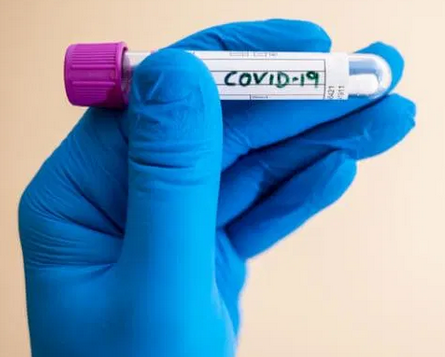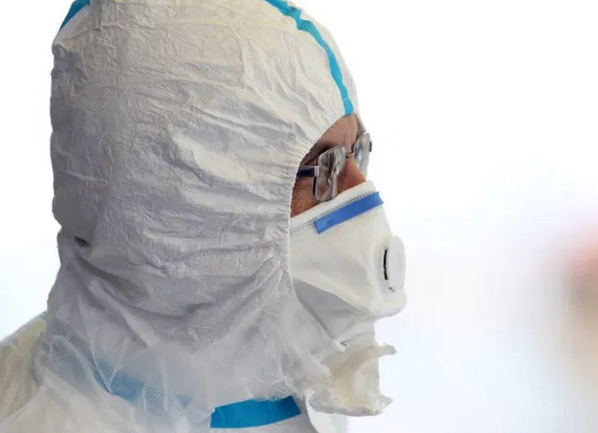© Marcos del Mazo | Dreamstime.com The number of daily new cases has remained low in Switzerland throughout May. The highest number of new cases over this period was recorded on 1 May (119). The latest daily number, published on 29 May, was 31 new daily cases. Since the beginning of May the number has ...
Topics:
Investec considers the following as important: 3.) Health, 3) Swiss Markets and News, Coronavirus Switzerland, Covid-19 Switzerland, Editor's Choice, Featured, health, newsletter, SARS-CoV-2 Switzerland
This could be interesting, too:
Investec writes The global brands artificially inflating their prices on Swiss versions of their websites
Investec writes Swiss car insurance premiums going up in 2025
Investec writes The Swiss houses that must be demolished
Investec writes Swiss rent cuts possible following fall in reference rate

© Marcos del Mazo | Dreamstime.com
The number of daily new cases has remained low in Switzerland throughout May.
The highest number of new cases over this period was recorded on 1 May (119). The latest daily number, published on 29 May, was 31 new daily cases. Since the beginning of May the number has been as low as 10.
The total number of reverse transcription polymerase chain reaction, or RT-PCR tests undertaken by 29 May 2020 was 390,688. At the beginning these test were reserved for the most sick patients. However, on 22 April 2020, nearly two months after discovering the first case, the health authorities loosened the rules on who could be tested.
At the height of the pandemic, the average daily number of tests was around 7,000. Since the beginning of April, the average daily number of tests has been stable at a rate of around 5,000, despite looser rules on who gets tested. Over the last 10 days the 7 day rolling average per capita test rate has declined by 30% in Switzerland.
Switzerland’s positivity rate – the percentage of positive tests – so far is 7.9%. While this rate is lower than in France (13.5%) and in the US (10.7%) it is higher than in the UK (6.7%), Italy (6.2%), Germany (4.6%) and Austria (3.9%). Positivity is one measure of how far you’re spreading the net to find infections.
Countries that have come close to eliminating the virus, like New Zealand (0.5%), often have low rates of positivity because they are testing large numbers of people despite finding few new cases. New Zealand’s daily positivity rate never went above 4%. Switzerland’s went as high as 18.4%. On 27 May 2020, New Zealand’s positivity rate was 0.003% compared to 0.63% in Switzerland.
In some nations, the number of tests rose dramatically during May. On 28 April 2020, the UK and Switzerland were conducting the same number of tests per capita. By 27 May, the UK was testing at 4.6 times the rate of Switzerland. Towards the end of May, Germany, Italy and Austria were all testing at rates around 50% higher than Switzerland – see chart below.
Why has the number of tests stagnated in Switzerland given the risk of mild and asymptomatic cases remaining off the radar?
Didier Pittet, head of infectious disease in Geneva, told RTS that Geneva could conduct up to 1,500 tests a day, however, testing is running at a rate of around 150 a day.
Some believe there are two things that might be keeping people away. One is the belief that the test is unpleasant. RT-PCR tests require a mucus sample from the back of the throat. Early tests used swabs that went in via the nose. Now samples can be taken directly from the back of the throat, a much less unpleasant process.
Another disincentive to test could be cost. RT-PCR tests in Switzerland cost CHF 120 (US$ 125) and must be paid for out of pocket. If you have already claimed health expenses up to or over your health insurance deductible, then you’d typically pay 10% of the cost, rather than the full cost.
The federal government recently created a scheme to cover the costs of testing mild cases, however, it isn’t immediately clear how the line is drawn between those who must pay and those who get a free test.
Tracking, tracing and strict quarantine can make up for a low number of tests. South Korea has consistently tested at around a third of the rate of Switzerland and lies somewhere between New Zealand and Switzerland on positivity. However, its testing is targeted. All those arriving in the country are tested and must spend 14 days in quarantine at home or in a government facility. Those caught breaking quarantine risk one year in prison. And, testing springs into action whenever a new case is found. Phone-based technology is used to identify those in close contact with someone infected.
Switzerland’s contact tracing app is yet to be deployed and there is no targeted testing or quarantine requirement for those arriving in the country. Without a comprehensive plan for targeted testing and tracing, Switzerland’s current level of testing might not be sufficient to ensure most infections are found.
Tags: Coronavirus Switzerland,Covid-19 Switzerland,Editor's Choice,Featured,Health,newsletter,SARS-CoV-2 Switzerland








